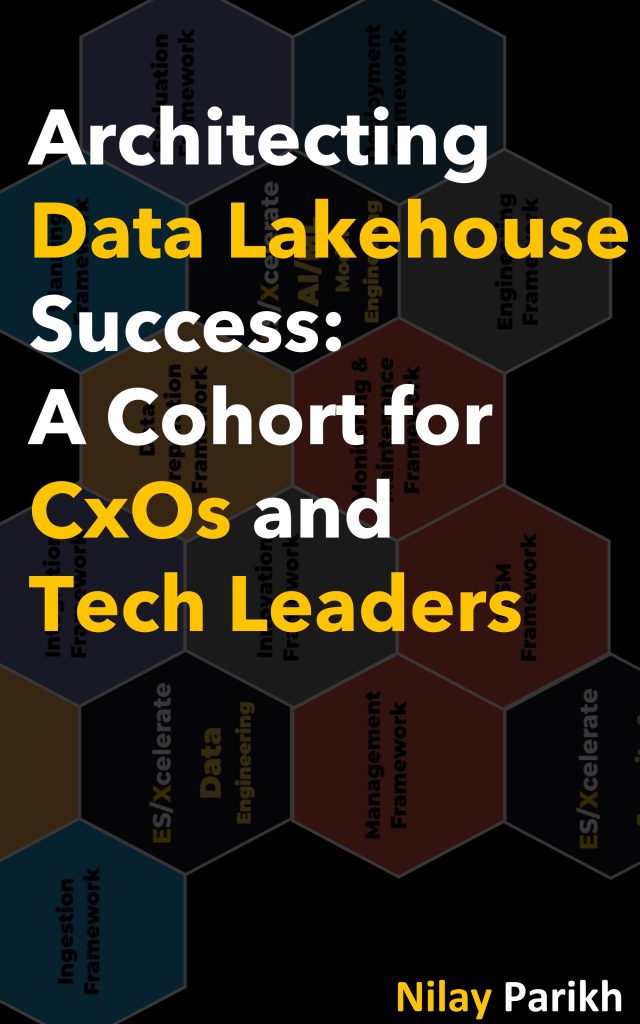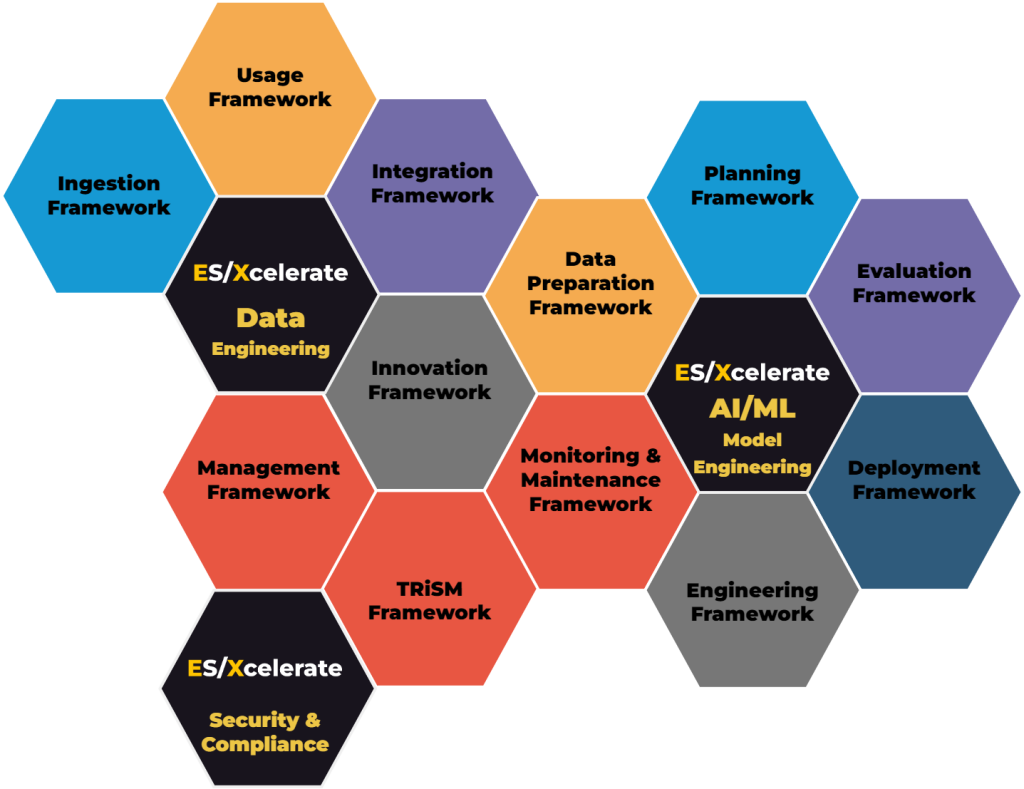
In the ever-evolving landscape of information technology, the foundation for building robust, efficient, and future-ready systems lies in understanding and implementing key architectural principles. These principles, spanning across diverse domains such as Application, Data, Operation, Security, Infrastructure, Enterprise Governance, and broader organizational contexts, collectively form a holistic blueprint for designing and managing technology solutions. They encompass the flexibility and modularity essential in application design, the strategic management and democratization of data, and the prioritization of automation and continuous integration in operations. Security is addressed through comprehensive, multi-layered approaches, adapting to the zero-trust paradigm, while infrastructure principles emphasize scalability, elasticity, and high availability.
At the enterprise level, these principles align IT strategies with business objectives, underscore the importance of compliance and sustainability, and foster an adaptive governance framework. Beyond these technical realms, there’s an emphasis on cross-functional collaboration, innovation, and resilience, ensuring that IT systems not only support but also enhance business agility and responsiveness to change. This comprehensive set of principles serves as a guide for organizations navigating the complex digital era, offering a roadmap to build systems that are not just functional but also resilient, secure, and aligned with evolving business needs.
Architectural Principles by Domain

In “Architecting Data Lakehouse Success: A Cohort for CxOs and Tech Leaders,” we embark on an insightful journey through the evolving landscape of data engineering and architecture. This book is a comprehensive exploration, spanning the history, anatomy, and practical application of data lakehouses. It’s designed for technical leaders, architects, and C-suite executives who aim to merge strategic business vision with technical architectural prowess.
Application
| Principle | Description | Exceptions |
|---|---|---|
| Modular Design/Integration | Design applications with modular components for scalability, maintainability, and easy integration with data lakes and warehouses. | Legacy systems not conducive to modularization. |
| User-Centric Design | Focus on user needs with intuitive interfaces and functionalities. | Back-end systems with minimal user interaction. |
| Cloud-Native Design | Design solutions optimized for cloud environments, leveraging cloud-specific capabilities. | On-premises or legacy systems not supporting cloud-native features. |
| Extensibility | Design applications for easy integration of new features and technologies. | Not needed for legacy systems due for retirement. |
| Interoperability | Ensure application compatibility with various data formats and processing frameworks. | Limited range support for specialized applications or specific applications with a narrow, defined scope. |
Data
| Principle | Description | Exceptions |
|---|---|---|
| Unified Data Management | Manage data to harness the strengths of both warehouses and lakes, ensuring consistency across storage, processing, and orchestration layers. | Specific compliance or regulatory requirements might dictate more segregated data management. |
| Data Integrity and Consistency | Ensure accuracy, reliability, and consistency of data across systems. | Eventual consistency may be required in real-time processing or specific real-time processing scenarios. |
| Data Privacy | Protect sensitive data through encryption and access controls. | Public datasets not containing sensitive information or jurisdictions with conflicting privacy laws. |
| Data Democratization | Make data accessible and understandable to non-technical stakeholders. | Restricted or sensitive data requiring limited access. |
| Data Quality First | Prioritize high standards for data accuracy and reliability. | Exploratory data analysis where completeness isn’t critical. |
| Format Flexibility | Choose data storage formats based on specific use cases. | Single dominant data format cases where flexibility is less critical. |
| Data Lifecycle Management | Implement policies for data retention, archiving, and deletion. | Short-term projects or transient data not requiring extensive lifecycle management. |
Operation
| Principle | Description | Exceptions |
|---|---|---|
| CI/CD & Automation | Ensure continuous, automated integration, deployment, and operational processes. | Manual deployment or intervention necessary due to security, regulatory reasons, or complex troubleshooting. |
| Continuous Monitoring | Monitor systems continuously to proactively address issues. | Non-critical systems where periodic monitoring is sufficient. |
| Agile & Scalable Data Operations | Support both batch and real-time data processing with scalable ingestion methods. | Operations involving large data sets or complex processing may require specialized approaches. |
| Proactive Risk Management | Continuously identify and mitigate risks in IT infrastructure and operations. | Emerging technologies lacking established risk frameworks. |
| Real-Time Observability | Implement real-time monitoring for efficient operational management. | Low-complexity systems with minimal user impact. |
Security
| Principle | Description | Exceptions |
|---|---|---|
| Comprehensive Data Security | Implement robust security measures across the data spectrum. | Industry-specific regulations requiring distinct security protocols. |
| Defense in Depth & Layered Defense | Employ multiple layers of security controls across all layers. | Small-scale or internal applications with limited exposure. |
| Zero Trust Security | Verify every access request, irrespective of location. | Environments where zero trust implementation is not feasible. |
| Least Privilege | Grant minimum necessary access for users and systems. | Situations requiring temporary elevated privileges. |
| API Security | Secure APIs interacting with systems and ensure compliance with standards. | Legacy systems where API modernization is not feasible in the short term. |
| Encryption by Default | Encrypt all data, at rest and in transit. | Cases where encryption may impede necessary data processing speeds. |
| Advanced Threat Detection | Use AI and ML for proactive threat detection and response. | Environments where AI/ML solutions are not implementable. |
Infrastructure
| Principle | Description | Exceptions |
|---|---|---|
| Elastic & Scalable Infrastructure | Design infrastructure to scale resources based on demand, leveraging cloud-native services. | Fixed-capacity systems or scenarios with strict data sovereignty laws. |
| Infrastructure Flexibility | Support cloud, on-premise, and hybrid models. | Regulatory or data sovereignty requirements limiting flexibility. |
| High Availability | Ensure continuous availability with redundancy and failover mechanisms. | Non-critical systems not requiring high availability setups. |
| Resource Efficiency | Maximize infrastructure efficiency and cost-effectiveness. | Scenarios prioritizing speed or convenience for experimental projects. |
| Elastic Resource Management | Scale operational resources horizontally based on demand. | Fixed capacity resources in predictable, stable demand scenarios. |
Enterprise Governance
| Principle | Description | Exceptions |
|---|---|---|
| Strategic Alignment | Align IT strategies with business goals and governance policies. | Projects with independent objectives or experimental initiatives diverging from established frameworks. |
| Compliance & Regulatory Adherence | Adhere to laws, regulations, and internal compliance requirements. | Non-regulated internal experimental projects or areas with no specific compliance needs. |
| Sustainability | Incorporate eco-friendly practices in technology design and deployment. | Scenarios where green technologies are not feasible. |
| Adaptive Governance Framework | Implement dynamic governance accommodating evolving data landscapes. | Legal frameworks requiring more rigid structures. |
| Data Stewardship & Privacy Compliance | Ensure data quality, privacy, and compliance. | Different governance standards mandated by external entities or conflicting privacy laws. |
| Sustainable IT Practices | Adopt sustainable practices in IT operations. | Existing contracts or legacy systems not aligning with sustainable practices. |
Any Other Domain (AoD)
| Principle | Description | Exceptions |
|---|---|---|
| Cross-Functional Collaboration | Promote collaboration across departments for comprehensive solutions. | Highly specialized tasks or sensitive projects limiting cross-functional access. |
| Resilience and Disaster Recovery | Design systems for resilience and quick recovery from disasters. | Non-critical systems where high availability is not a primary concern. |
| Innovation and Experimentation | Encourage innovation to foster new solutions. | Strictly regulated environments limiting experimentation. |
| Continuous Optimization | Regularly optimize processing capabilities and resource allocation. | Fixed workloads with predictable resources. |
| Transparency in Data Usage | Maintain transparency in data usage and processing. | Sensitive projects requiring limited transparency. |
| Adaptability to Emerging Technologies | Integrate emerging technologies in data processing and analytics. | Legacy systems being phased out. |
This structured approach provides a comprehensive view of the principles across different domains, considering the unique needs and exceptions of each area.
ES/Xcelerate Data&AI Framework

© Nilay Parikh. All rights reserved. No warranty or liability implied.
The ES/Xcelerate Data&AI Framework encapsulates a comprehensive set of architectural principles, meticulously designed to guide organizations in the intricate world of data and artificial intelligence. These principles are integral to the framework’s mission to streamline and enhance the entire lifecycle of data analytics and AI/ML model development. Within this innovative framework, each principle is carefully crafted to address the multifaceted challenges businesses face in leveraging data and AI for transformational growth. From ensuring modular and scalable application design, managing and democratizing data, to embedding robust security measures and fostering cross-functional collaboration, these principles form the backbone of a strategic approach to data and AI engineering.
In the ES/Xcelerate Data&AI Framework, these principles are not isolated mandates; they are interconnected components of a larger ecosystem that spans across various domains such as Application, Data, Operation, Security, Infrastructure, and Enterprise Governance. This holistic integration is crucial for organizations seeking to break down silos, align stakeholders, and achieve visibility and control over their data and AI projects. By adhering to these principles, organizations can efficiently navigate the complexities of data management, AI model development, and deployment, ensuring that their initiatives are not only technically sound but also aligned with broader business objectives and compliance standards. The ES/Xcelerate Data&AI Framework, with its foundational architectural principles, thus serves as a vital roadmap for companies aiming to become truly data-driven and AI-augmented in an increasingly digital and interconnected world.
Available at Amazon
- US: https://www.amazon.com/dp/B0CR71D58S
- UK: https://www.amazon.co.uk/dp/B0CR71D58S
- IN: https://www.amazon.in/dp/B0CR71D58S
- DE: https://www.amazon.de/dp/B0CR71D58S
- FR: https://www.amazon.fr/dp/B0CR71D58S
- ES: https://www.amazon.es/dp/B0CR71D58S
- IT: https://www.amazon.it/dp/B0CR71D58S
- NL: https://www.amazon.nl/dp/B0CR71D58S
- JP: https://www.amazon.co.jp/dp/B0CR71D58S
- BR: https://www.amazon.com.br/dp/B0CR71D58S
- CA: https://www.amazon.ca/dp/B0CR71D58S
- MX: https://www.amazon.com.mx/dp/B0CR71D58S
- AU: https://www.amazon.com.au/dp/B0CR71D58S
Disclaimer
The views expressed on this site are personal opinions only and have no affiliation. See full disclaimer, terms & conditions, and privacy policy. No obligations assumed.
